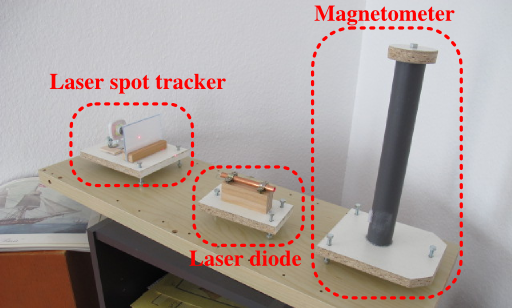
[Dr. Fortin] teaches physics at a French High School, and to get his students interested in the natural world around them, he built a geomagnetic observatory, able to tell his students if they have a chance at seeing an aurora, or if a large truck just drove by.
We’ve seen this sort of device before, and the basic construction is extremely similar – a laser shines on a mirror attached to magnets. When a change occurs in the local magnetic field, the mirror rotates slightly and the laser beam is deflected. Older versions have used photoresistors, but [the doctor] is shining his laser on a piece of paper and logging everything with a webcam and a bit of OpenCV.
The design is a huge improvement over earlier DIY attempts at measuring the local magnetic field, if only because the baseline between the webcam and mirror are so long. When set up in his house, the magnetometer can detect cars parked in front of his building, but the data he’s collecting (French, but it’s just a bunch of graphs) is comparable to the official Russian magnetic field data.















And UFO detector! Just like one I read about back in the late 60’s in Pop-Tronics.
I like the copper damnpend magnets. However wouldn’t a Hall effect sensor be simpler?
One question to the working principle:
the magnet tries to align with the earths magnetic field and is damped to eddy current in the copper tube. The thread has more or less no torsional stiffness. Therefore is the magnetic moment ( http://en.wikipedia.org/wiki/Magnetic_moment ) zero and it is only possible to measure the orientaiton of the magnetic field perpendicular to the vector of the gravitational force.
Or is the torsional stiffness not negelectable?
Calculated it for myself, for anyone interested: It is not neglectable.
It would be interesting to try to combine this kind of apparatus with an infinity mirror arrangement so that subtle angle differences compound in multiple reflections, all photographed with the digital camera. It might take sensitivity up an order of magnitude and look cool too. :-)